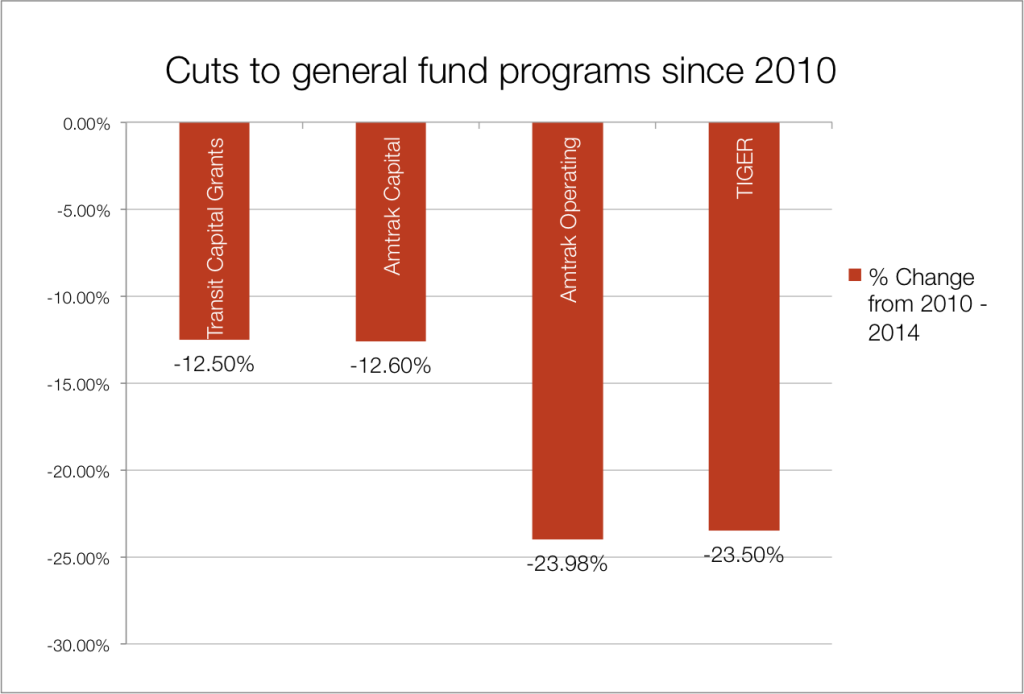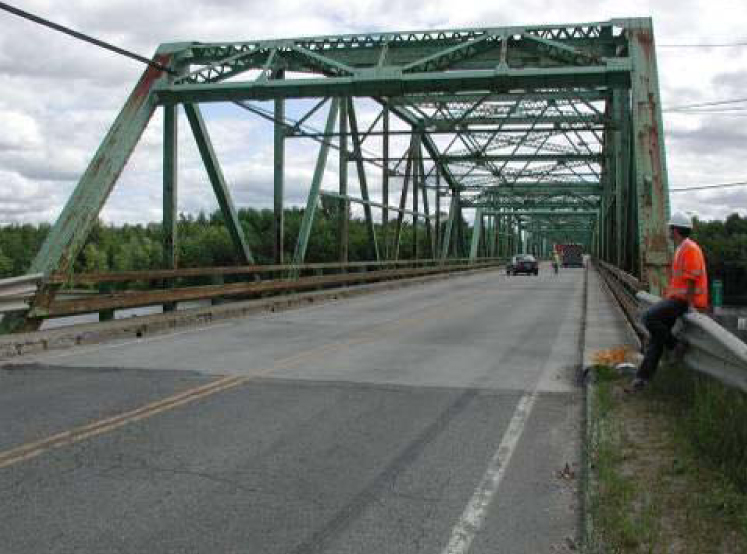Government shutdown or not, more cuts are in store for transportation
Whether or not Congress can reach an agreement in time to prevent a government shut-down before tomorrow, one thing is clear: shut-down or not, this next fiscal year (FY14) will be a year of more cuts — including cuts to transportation.
(This post is by Sarah Kline, T4 America’s research director. -Ed.) We’re less than 24 hours away from yet another possible government shut-down as Congress continues debating a plan for government spending covering the first few months of the 2014 fiscal year, which begins tomorrow on October 1.
The bill they’re considering is called a “Continuing Resolution” (or CR), a simple spending bill that continues the funding levels from the previous year as Congress continues to approve a full budget for the year. Whether or not Congress can agree on a CR in time to prevent a shut-down, however, one thing is clear: this next fiscal year (FY14) will be a year of more cuts.
Sequestration requires at least a 7 percent cut for discretionary programs to meet the FY14 budget caps. For many programs this will mean a 7 percent cut from the FY2012 funding levels for 2014, deeper than the 5 percent required for this current 2013 fiscal year. As severe as the cuts in FY14 are, they are only the leading edge of devastating cuts to come if Congress does not agree on a long-term way to provide the transportation trust fund with more, dedicated revenues. Relying only on existing revenue from the federal gas tax would lead to massive cuts to highway and transit projects starting next fall in FY15.
What does sequestration mean for transportation programs?
To understand the impact of sequestration on transportation programs, keep in mind that for budgetary purposes, transportation programs fall into two categories: those funded from the Highway Trust Fund (where federal fuel taxes are deposited), and those discretionary programs funded from the general fund (where most other federal taxes go).
Trust Fund Programs
In general, programs funded from the highway trust fund are not subject to the sequester. Federal-aid highway programs and core transit formula programs funded by the trust fund were not cut in this last year. In fact, funding for those programs increased slightly over their FY2012 levels to match the authorized levels in MAP-21.
But in FY2014, because fuel tax revenues won’t be sufficient for the funding levels authorized by MAP-21 for those programs, MAP-21 also called for a transfer of $12.6 billion from the general fund into the Highway Trust Fund. That $12.6 billion is subject to the sequester, and will face cuts of over $900 million. Unlike other programs, though, this cut does not directly lead to cuts in funding for highway and transit projects. What it will do is speed up the timeline for the Highway Trust Fund going broke, creating the potential for greater cuts or the need for similarly large transfers of general funds — a difficult proposition. In fact, some are concerned that, due to sequestration, the Trust Fund may not remain solvent through even this next fiscal year as originally expected when MAP-21 was enacted.
General Fund Programs
Transportation programs funded by the general fund are subject to the same cuts as most other federal discretionary programs under sequestration. This includes the New Starts and Small Starts programs, which fund construction of new transit service; the highly oversubscribed TIGER program of competitive grants, and Amtrak. As mentioned above, these programs were already cut by about 5 percent in FY13 compared to their FY2012 level, and will be cut by at least 7 percent and possibly more than 8 percent in a continuing resolution due to the sequestration requirements (the Office of Management and Budget will determine the exact percentage later this year). As a result, there will be less investment in new transit lines, in intercity passenger rail, and in innovative projects in cities, towns, and suburbs across the country.
What does that mean in real terms? One example:
DOT’s TIGER competitive grant program lost $25 million in FY2013 and could lose as much as $41 million in FY2014 due to sequestration. The sequester cuts come on top of cuts already made to the TIGER program over the years since 2010. If Congress had continued funding TIGER at its 2010 level every year since then, DOT could have funded 50 more innovative transportation projects (assuming an average grant size similar to the average size of the recently announced TIGER V grants). Instead, those projects are still waiting in a long line, and the problems they are intended to address – congestion, safety, efficiency, access to jobs – are only getting worse.
(Replacement of Maine’s Penobscot River bridge, built in 1896 and widened in 1946, is just one example of a project that is still awaiting TIGER funding. (Source: MaineDOT, TIGER Application for Penobscot River Bridge, June 2013)
Funding Table: Comparing 2012, MAP-21 and 2014 transportation funding
| Program | FY12 Appropriations | MAP-21 Authorization | FY14 Appropriation* (includes sequestration) |
|---|---|---|---|
| Federal Aid Highways | $39.1 billion | $39.7 billion | $39.7 billion |
| Transit Formula Grants | $8.36 billion | $8.5 billion | $8.5 billion |
| Transit Capital Grants | $1.955 billion | $1.9 billion | $1.75 billion |
| Amtrak Capital | $952 million | N/A | $874 million |
| Amtrak Operating | $466 million | N/A | $428 million |
| TIGER | $500 million | N/A | $459 million |
| Projects of National & Regional Significance (PNRS created in MAP-21) | N/A | $500 million | $0 |
*FY2014 amounts are those that would be provided if the partial-year CR is extended for the full year, and assumes a cut of 8.2% due to sequestration for general fund programs.





















